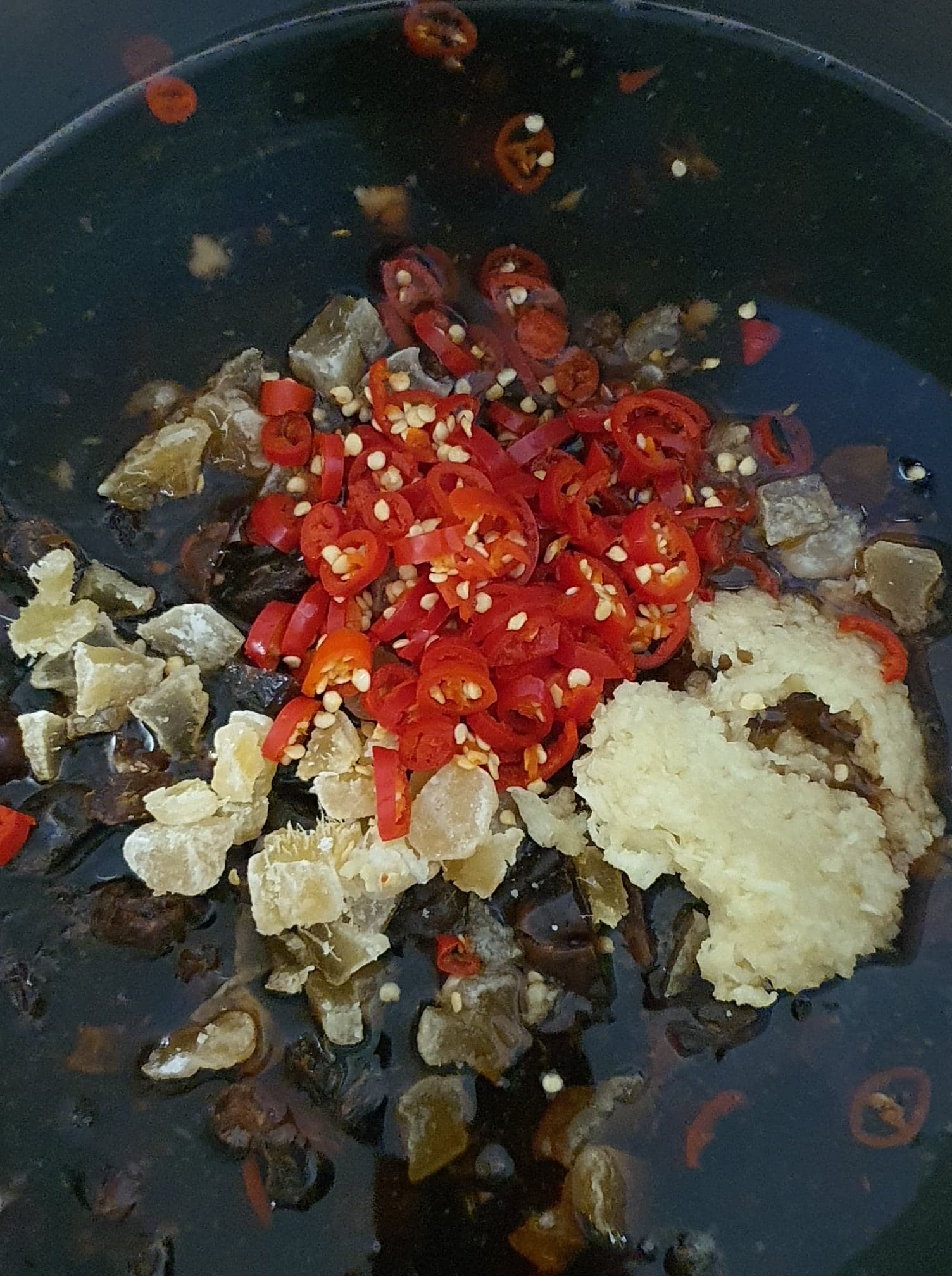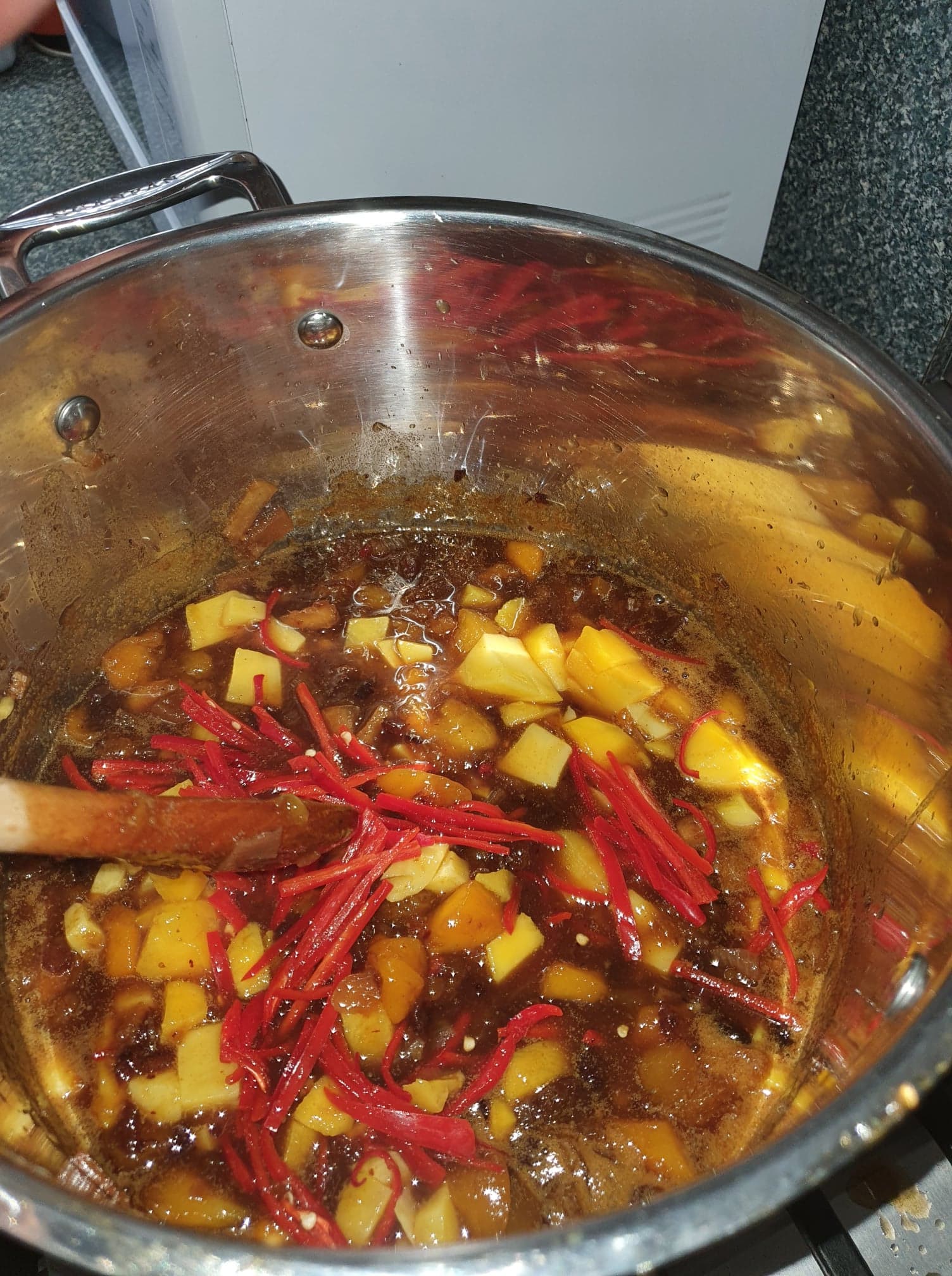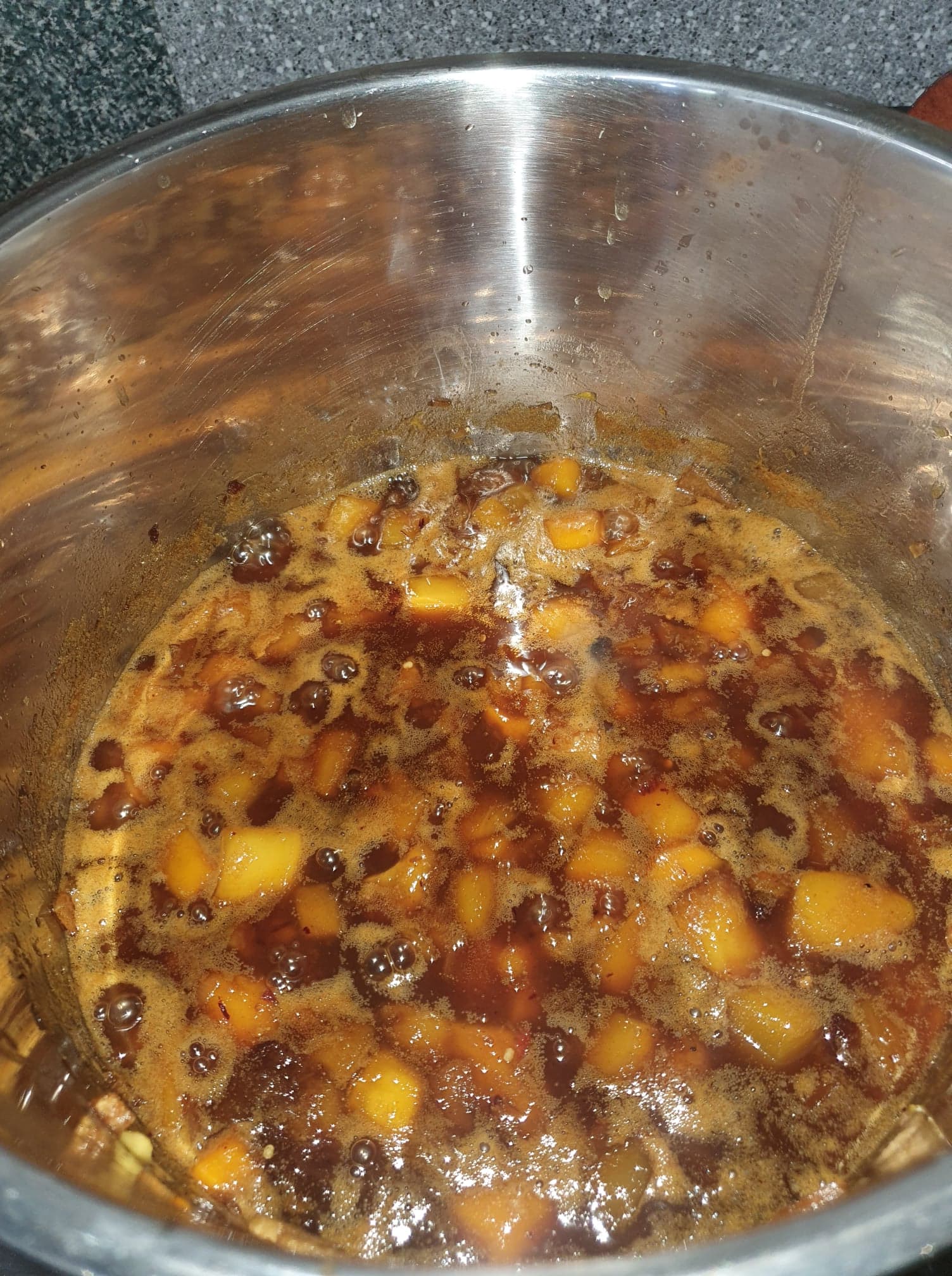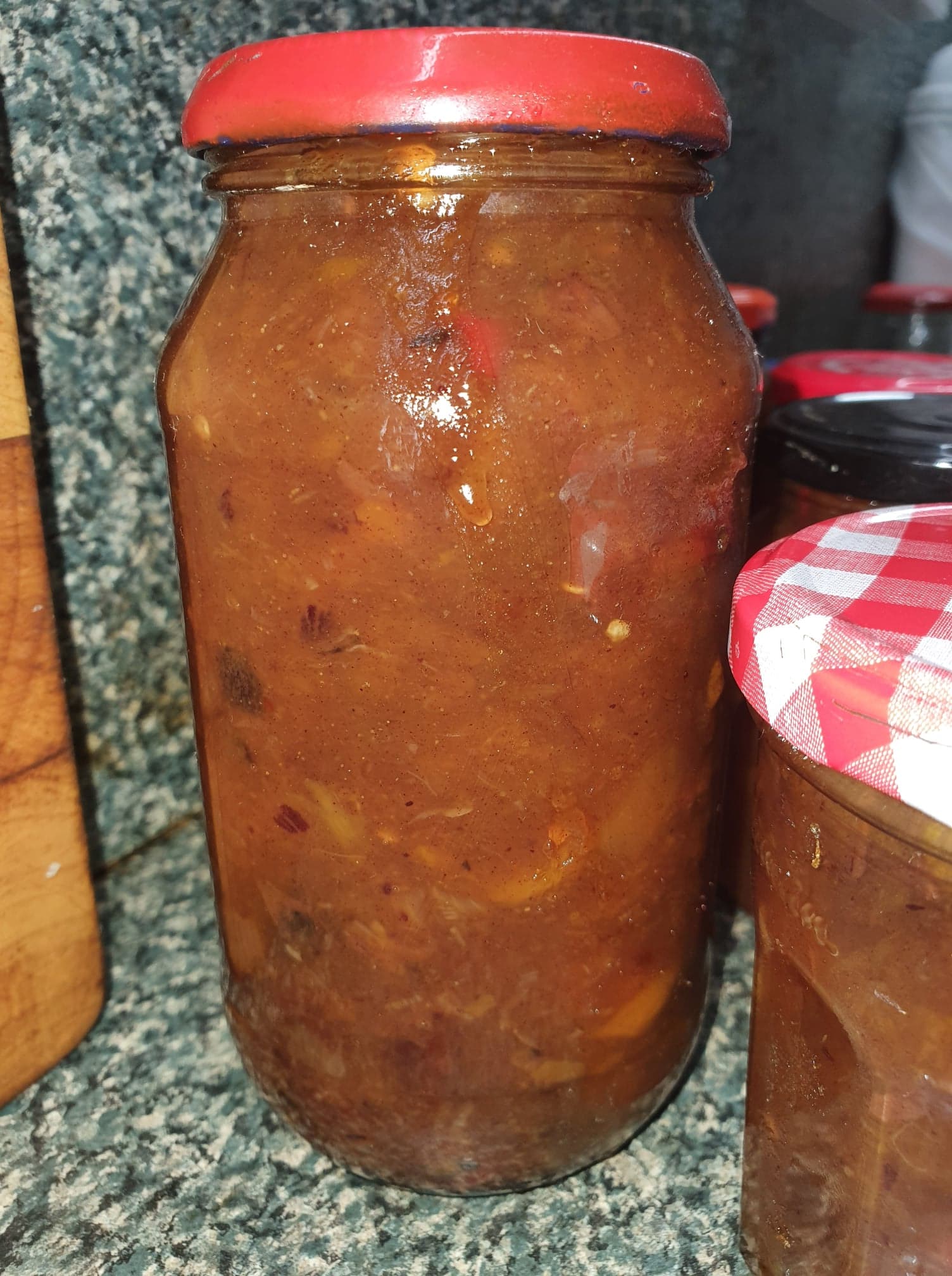Equipment!
- Stove
- Preserving pan (Large pot with lid - minimum 4.8 litre)
- Chopping board
- Cooks knife (or any knife for chopping)
- Kitchen scales
- Cup measurers
- Liquid measuring jug
- Wooden (or plastic) stirring spoon
Ingrediants!
- 500 grams of ripe Turpentine mangoes, cut into 1cm cubes (see note 1)
- 1.5 Kg of ripe eating mangoes, cut into 1cm cubes (see note 2)
- 500 grams of just ripe eating mangoes, cut into 1cm cubes (see note 3)
- 350 ml white vinegar
- 350 ml malt vinigar (see note 4)
- 250 grams raisins, coarsely chopped
- 125 grams pitted dates, coarsely chopped
- 65 grams ginger, grated (see note 5)
- ¼ cup birds eye chilli with seeds in, chopped
- 6 long red chillies, sliced lengthwise with seeds removed (see note 6)
- 250 grams Granny Smith apples, peeled and cored, cut into 1cm cubes
- 250 grams brown onion, chopped coarsely
- 375 grams white sugar
- 375 grams brown sugar (see note 7)
- Salt to taste (see note 8)
Notes on ingrediants
note 1: Turpentine, or any stringy variety of mango. If you can’t get Turpentine mangoes, it is ok to use Bowen or KP (Kensington Pride) mangoes but it’s a better chutney if you have a few stringy mangoes in the chutney as it holds together much better and isn’t so runny.
note 2: Kensington Pride or Bowen mangoes
note 3: To be added to cooking half an hour before you finish the cooking. This is a presentation trick for the cooking competitions, so that squares of light coloured mango can be clearly seen in the darker coloured chutney. They must be cooked for at least 30 minutes to ensure they are fully cooked and don’t cause fermentation when bottled.
note 4: Do not use brown vinegar as it has too much acid.
note 5: Peeled and grated fresh ginger, if not available, bottled crushed ginger is acceptable.
note 6: To be placed in the cooking chutney 30 minutes before finished cooking. When bottling, the chillies should eb pushed to the outside of the jar for presentation.
note 7: Don’t use dark brown sugar as it makes the colour of the chutney too dark and it doesn’t look as appetizing.
note 8: Don’t use too much salt as the flavour of the chutney gets smoother with maturity.
Step 1!
Add all the ingredients except the mangoes into a large preserving pan, put the lid on as you want to keep the steam in the boiler for the liquid at this stage. Bring to the boil and then reduce to a simmer for approximately 20 minutes to half an hour to soften the apples etc. Stir occasionally to make sure all the sugar has dissolved.

Step 2!
Add 2 kg only of the ripe chopped mangoes and simmer on low heat with the lid off from now on as you need some of the liquid to evaporate to help the chutney get thicker, stirring approximately every 5 minutes to prevent it from catching at the bottom of the boiler, until thickened. This should take about a further 1 hour perhaps a little longer depending on the type of stove you are using. You have to cook it slowly, so be patient and stir regularly otherwise it will stick as the chutney has a high sugar content with all the fruits and sugars.

Step 3!
Add salt to taste. Add the last ½ kg of just ripe Bowen or KP mangoes and the 6 sliced long red chillies and cook for a further 30 minutes on low heat, stirring regularly to prevent sticking.

Step 4!
Make sure the last of the mangoes added are fully cooked before bottling, otherwise you may experience fermentation and growth on top of the chutney when opening a jar later. Bottle immediately and put tops on the jars while the chutney is still hot, making sure that some of the long chillies and still yellow mango cubes show on the outside of the jar for decorative presentation.
